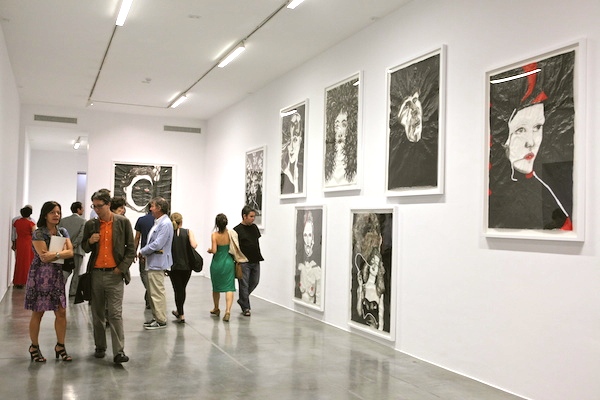Analysis
Spanish Galleries Unite to Weather Funding Cuts
Can they woo international collectors back to the country?

Can they woo international collectors back to the country?

Lorena Muñoz-Alonso

The Spanish government has announced a 41 percent cut to a portion of the country’s annual budget allocated to help commercial galleries project themselves internationally. To foreign ears, the fact that the government is helping for-profit dealers may sound bewildering in itself. But considering Spain’s fragile art market, the funds are essential for commercial galleries struggling to make ends meet. That pressure is doubled by the fact that in order to sell at all, Spanish art dealers must focus on international fairs—and fairs are expensive.
“The level of Spanish collecting has decreased so much that some Spanish galleries are already making 90 percent of their sales abroad,” the Spanish gallery director Max Estrella told the online newspaper El Confidencial.
“Without these grants it would have been impossible for us to take part in international fairs such as Art Basel Miami Beach, Frieze New York, Armory Show, FIAC, and Art Brussels” said Alex Nogueras, co-director of NoguerasBlanchard on the gallery’s Facebook profile. “These grants also benefit Spanish artists, whose international reach could be seriously diminished” due to the cuts.
The figures are telling. In 2011, for example, the annual budget for governmental funding of art galleries was $1.5 million (€1.2 million). In 2013, the budget was decreased to $220,000 (€171,000). This year’s budget amounts to a total $130,000 (€101.000), which will be distributed between 37 galleries, reports El Confidencial. The distribution system is based on the specific fairs that each gallery is participating in. For example, the largest grants in 2014 have been given to Elvira González and Polígrafa: $4,334 (€3,354) to attend Art Basel in Basel.
Madrid Apertura and Barcelona’s ArtNou/Primera Visió
Galleries from Spain’s biggest cities, Madrid and Barcelona, have confronted these budgetary reductions by attempting to bring buyers back to Spain. With an eye to Berlin’s successful Gallery Weekend, Madrid’s Apertura and Barcelona’s ArtNou/Primera Visió seek to lure participating galleries’ collectors by hosting joint openings and offering guided routes between the weekends’ numerous shows.
Apertura’s third edition kicked off yesterday with 44 of Madrid’s most important galleries, including Helga de Alvear, Elba Benítez, MaisterraValbuena, NoguerasBlanchard, Parra & Romero, Bacelos, The Goma, and Max Estrella.
The third edition of ArtNou/Primera Visió took place last weekend in Barcelona, with ADN Galería, àngels barcelona, Galería Estrany de la Mota, NoguerasBlanchard and The Green Parrot, among others on the roster. ArtNou/Primera Visió takes a slightly different tack than the capital’s Apertura. Galleries are asked to present shows of emerging artists who are less than 35-years-old. The programming also includes a selection of Barcelona’s museums, such as MACBA, La Capella, and the Fundació Joan Miró.
This year, Valencia also adopted the strategy. It will host the first Abierto Valencia on September 26. Twenty-two galleries have signed up to be part of the event, including key players like Luis Adelantado, EspaiVisor, Rosa Santos and Parking Gallery.
These joint events have proven successful in terms of bringing a new public to commercial galleries. Apertura 2013 had a total of 15,000 visitors, which situates it right behind Berlin’s Gallery Weekend in terms of audience. However, it remains to be seen how these figures may, or may not, translate into sales.